Everyone loves lounging in the sunshine and soaking up those rays that lead to those bronze tans. After all, nothing rejuvenates your mood quite like a fine sunny summer day. But knowing how to repair skin damage on the face is critical for outdoor lovers, as mistakes can happen, like getting back from the pool or beach, only to find the sunscreen you applied wasn’t nearly as strong as you thought. Unfortunately, it isn’t always so much fun in the sun. Too much exposure over time will begin to show in the form of wrinkles, freckles, saggy skin, dark spots and imbalanced pigmentation.
To be able to know how do you repair sun-damaged skin you must first prevent sun damage.
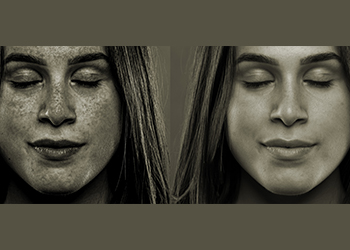
The 3 Rules to Dark Spots:
- Be sure to always wear UV Protection creams all year-round to block out those unwanted rays. Try to cover up as best you can with hats and clothing during the most intense times of the day, typically from 10 am – 2 pm.
- Be sure to suitably protect your skin from the sun as best you can to reduce the chances of acne hyper-pigmentation which are darker spots left by acne blemishes.
- Be sure to always check the ingredients of your sunscreen and creams to ensure they do not contain anything that will cause your skin to become more sensitive when exposed to the sun.
But if the sun damage is done, and you’re looking at how to repair sun-damaged skin, we’ve got you covered so you can enjoy those sunny, summer days!
The first step to reversing sun-damaged skin is to stop it from getting worse. A key combatant and ally to your cause is sunscreen. However, if you are already a tan too far to repair sun-damaged skin you must take an immediate stand.
While you may be considering fillers, laser treatment, and other invasive, costly, and often painful procedures to combat sun damage to your skin, we recommend a more natural approach first, with any of the following on how to repair sun-damaged skin face naturally.
Here are some tips on How to Repair Sun-Damaged Skin:
Coconut Oil
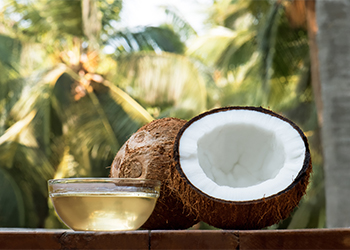
A potent antioxidant, Coconut Oil is often dubbed a saviour in the fight to reverse sun-damaged skin being packed with healthy fatty acids and Vitamin E that moisturize the skin, reverse sun damage, and improves skin tone. Here is how you can use coconut oil and how to repair sun-damaged skin naturally by implementing the below.
Using a spoon or your fingers to extract a small amount of coconut oil from the container and, once softened to a liquid, massage it into sun-damaged areas of the skin. For best results, apply a small amount of coconut oil up to three times per day and expect to see a brilliant change in both your skin tone and complexion within just a few days. The medium-chain fatty acids in coconut oil also have antimicrobial properties that can help protect against harmful microorganisms and many types of skin infections, including acne, cellulitis, folliculitis and athlete’s foot by effectively killing bacteria and fungi.
Applying coconut oil directly to the skin may even prevent the growth of these microorganisms and reduce inflammations, moisturise skin, and unclog pores to fight acne. It can even help heal a small wound!
Vitamin E / Vitamin C / Antioxidants
These slow down the degradation of skin cells due to outside elements. They slow the process of ageing on your skin and strengthen collagen, in turn reducing dark spots.
Vitamin E and Vitamin C protect against UV-afflicted skin damage on a variety of fronts, including determinations of sunburn cell formation, erythema, edema, blistering, molecular markers of DNA damage and the development of skin cancer itself.
Vitamin E itself acts as a natural antioxidant that can help reduce inflammation caused by UVA and UVB being a fat-soluble antioxidant essential for the healthy maintenance of skin. Naturally, Vitamin E is a group of molecules with related structures, some of which may have unique properties in skin as an antioxidant that react with reactive oxygen species. Vitamin E also absorbs the energy from ultraviolet (UV) light, shielding you more effectively.

Alpha Hydroxy Acids (AHA)

Alpha hydroxy acids reduce hyper-pigmentation. Apply in the evening and accompany daytime sunscreen. The more common types of AHA’s are glycolic acids from sugarcane, lactic acids from milk and mandolin acids that come from almonds.
A whole group of plant and animal-derived acids are used in a variety of skincare products. These include daily anti-ageing products, such as serums, toners, and creams, as well as occasional concentrated treatments via chemical peels.
The seven types of AHAs commonly used in skincare products include:
citric acid (from citrus fruits)
glycolic acid (from sugar cane)
hydroxycaproic acid (from royal jelly)
hydroxycaprylic acid (from animals)
lactic acid (from lactose or other carbohydrates)
malic acid (from fruits)
tartaric acid (from grapes)
While primarily used to exfoliate, AHA’s also help with:
promoting collagen and blood flow
correcting discolouration from scars and dark spots
tightening the appearance of wrinkles
preventing acne breakouts
brightening complexion
increasing product absorption
Retinoids
One of the other ways on how to fix sun damaged skin is using retinoids. These Vitamin A compounds stimulate the skin cells to renew themselves and increase the production of collagen, lightening dark spots.
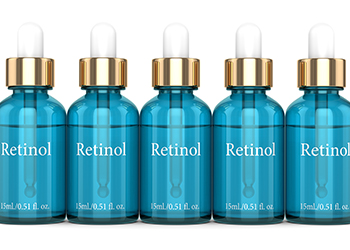
Exfoliants
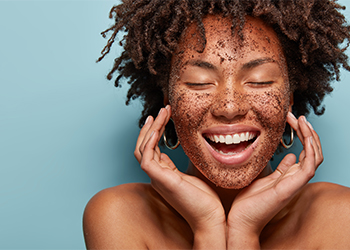
These exfoliants contain chemicals that speed up the rate at which skin cells are produced reversing the sun damage that causes dry skin, imbalanced pigmentation, freckles, and clogged pores, leading to dark spots.
Lightening Agents
While these contain an ingredient to mask over blemishes when paired with a Retinoid, it is a more temporary solution and will not totally get rid of the freckles or blemishes.
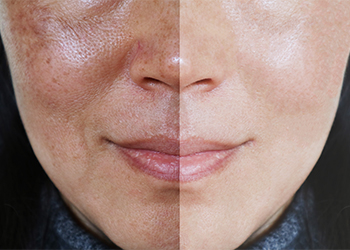
Chemical Peels
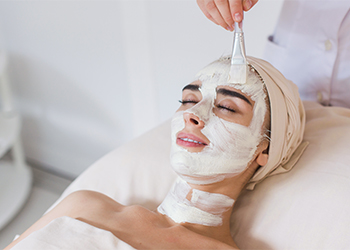
One of the options you ladies can try on how to fix sun damage on the face is to try out a chemical peel by visiting a dermatologist. Chemical peels are non-surgical and remove the top layer of skin, enabling the clear skin beneath to appear. Depending on your case you may receive a shallow, medium, or deep peel depth, with the deeper ones known to cause some swelling and redness and a more prolonged recovery time.
Photo Rejuvenation
A light-based device with a green light that offers the utmost in stimulating blood vessels to enhance skin texture, minimise redness, freckles and dark spots. It promises a more conclusive result than peels or creams.
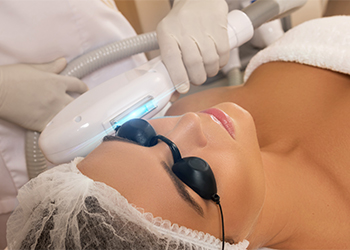
Fractionated Non-Ablative Lasers
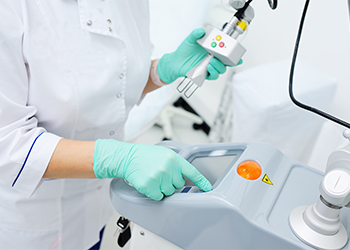
These create deep tissue hairline cuts into the skin and allows it to regrow bursting with collagen and smoothing over the formerly affected areas.
For More Severe Cases of Sun Damaged Skin:
Ablative Lasers
These pack more of a punch and totally obliterate the top coat of skin. However, they do require a lengthier healing process and more intense recovery period due to the depth required, for the more severe cases it treats.
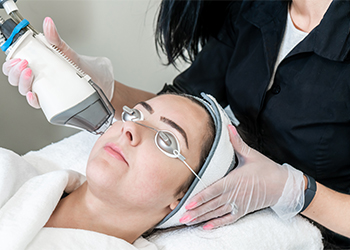
Parachute Advansed Extra Virgin Coconut Oil
A wholesome adversary against sun damage to the skin is Parachute Advansed Extra Virgin Coconut Oil for the Skin. Parachute Advansed Extra Virgin Coconut Oil for the Skin offers more natural and absorbent moisture that hydrates your skin, leaving it smooth and soft while repairing the sun-damaged areas and restoring a balanced complexion with some added shine and tighter skin.
Frequently Added Questions
How do you fix sun damaged skin naturally?
Coconut Oil – Vitamin E – Vitamin C – Alpha Hydroxy Acids are all great restorers of balanced skin tones and repairing sun damage to exposed skin.
What does sun damage on skin look like?
Dark Spots imbalanced pigmentation and also in the form of wrinkles, freckles and saggy skin.
How do you know if you have skin damage?
To known how to repair sun-damaged skin you need to first identify the skin damage. You will find dark spots, blotches, and wrinkles that show up over time. Coincidentally, so is a suntan as the sun’s beams bring out a chemical in your body associated with melanin, which darkens your skin in its efforts to protect it.
There are other kinds of damage that aren’t so obvious to the eye and if you feel that is the case with you, we strongly recommend you visit a dermatologist.
Does coconut oil reverse the skin damage caused by the sun?
Coconut oil is commonly referred to as a miracle worker, is loaded with fatty acids and vitamin E. Those fatty acids work to nourish the skin as a natural moisturiser, and vitamin E acts as a natural antioxidant that can help reduce inflammation caused by UVA and UVB rays.
Is Vitamin E a potent combatant to preventing sun damage to the skin?
Vitamin E is a fat-soluble antioxidant essential for the healthy maintenance of skin. Naturally, Vitamin E is a group of molecules with related structures, some of which may have unique properties in the skin as an antioxidant that react with reactive oxygen species. Vitamin E also absorbs the energy from ultraviolet (UV) light, shielding you more effectively.
Before Heading Out:
Remember the first step on how to recover sun-damaged skin is to avoid it by wearing sunscreen, but be sure to check the ingredients to make sure it doesn’t contain anything that will enable sensitivity to sunlight. This might leave you back to the question of how to repair sun-damaged skin as it increases sun damage to your skin. So, go out and enjoy the great outdoors as much as you want, just be safe and develop a reliable routine to ward off sun damage to your skin.
For severe cases, please visit a Dermatologist and remember the 3 rules on how to repair sun-damaged skin and prevent it:
- Be sure to always wear UV Protection creams all year-round to block out those unwanted rays. Try to cover up as best you can with hats and clothing during the most intense times of the day, typically from 10 am- 2 pm.
- Be sure to suitably protect your skin from the sun as best you can to reduce the chances of acne hyper-pigmentation which are darker spots left by acne blemishes.
- Be sure to always check the ingredients of your sunscreen and creams to ensure they do not contain anything that will cause your skin to become more sensitive when exposed to the sun.
Explore our blog section to read more about topics such as Skin care routine for acne, different Home Remedies for Pimple, Winter Skin Care Routine and so on to get rid of skin problems naturally at home.



